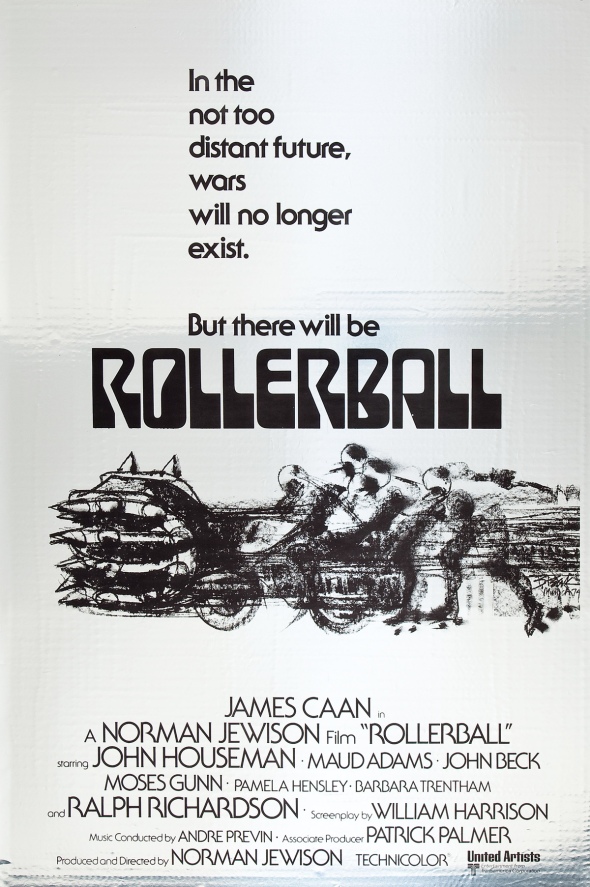More than 40 years ago, around the time public outcry was peaking about brutality in football, a University of Arkansas English professor attended a basketball game at Barnhill Arena*. There, with the Razorbacks trailing, a fight broke out. It was, apparently, quite a vicious squabble, so much so it inspired the Hogs to roar back for a win.
It also inspired the professor, William Harrison, to wonder just how violent sports in the future may become. He was moved to pen “a little experimental story.”
That story, “Roller Ball Murder,” published in Esquire and inspired the screenplays for two movies. The story centers on a highly popular futuristic sport involving balls and big, strong men flying at each other at increasingly high velocities. Rules are changed to make the game more violent and drive up ratings. The result: higher rates of in-game injuries, and frequent death. Crowd noise for the first movie, released in 1975, was actually recorded during a live game at Barnhill Arena.
Long before studies of former NFL players’ brain tissue shook America’s football-industrial complex to its stem, the sport had undergone other crises involving player safety. In the 1970s, no microscope was needed to see neck and spine injuries among players of all levels were escalating fast. One main culprit was the hard-shell helmet that had essentially become a spearing weapon. Too many coaches were teaching players a head-first form of tackling that left a path of mangled bodies in its wake, sending insurance premiums through the roof.Rollerball, a movie about a dystopian society fixated with an ultra-violent sport, became an international hit in 1975 and triggered more debate on brutality in sports within the general public. A former Penn State University president became so worried about the direction football was headed he made a plea in the form of a prediction to Joe Paterno, the former Nittany Lions head coach. “Joe, if football doesn’t do something about the injuries, soccer will be our national sport in 10 years.”
This didn’t happen, of course.
It is Manning, not Messi, Sherman, not Suarez, who dominate the headlines before Sunday’s massively anticipated Super Bowl. Denver’s greatest passing offense of all time is on a collision course with Seattle and its most fearsome pass defense in recent history. This here is tectonic heat, a contrast hitting at the heart of why we love sport in the first place. The NFL has most of me in its grasp for this one.
And yet, there is unease. Questions of whether the game’s brutality has gone too far persist. In terms of quantity and severity, there are signs we are on the cusp of the most violent Super Bowl yet.
The violence and danger of football extends far past professional stadiums.
Start with the increasing size, strength, and speed of players at almost all positions that has contributed to a rise in overall injuries over the last decade—from 2,623 in 2004 to 3,126 in 2012. Kam Chancellor, Seattle’s all-league safety, stands 6’3”, 232 pounds—specs that in the 1950s could have belonged to a defensive tackle. Nobody mixes mass, acceleration, and aggression quite like Chancellor, who appears to have the perfect mindset for somebody paid to do stuff like this:
“When I go out there, all of these hard hits and laying dudes out, that’s just my passion for the game,” he told the Seattle Times. “That’s just showing how much I love this game.”
*I haven’t been able to find an original interview source in which Harrison cites Barnhill as the site of the basketball game, but I have found secondary sources like this. Plus, it just makes sense. Very few English and creative writing professors bother to follow a team on the road.




